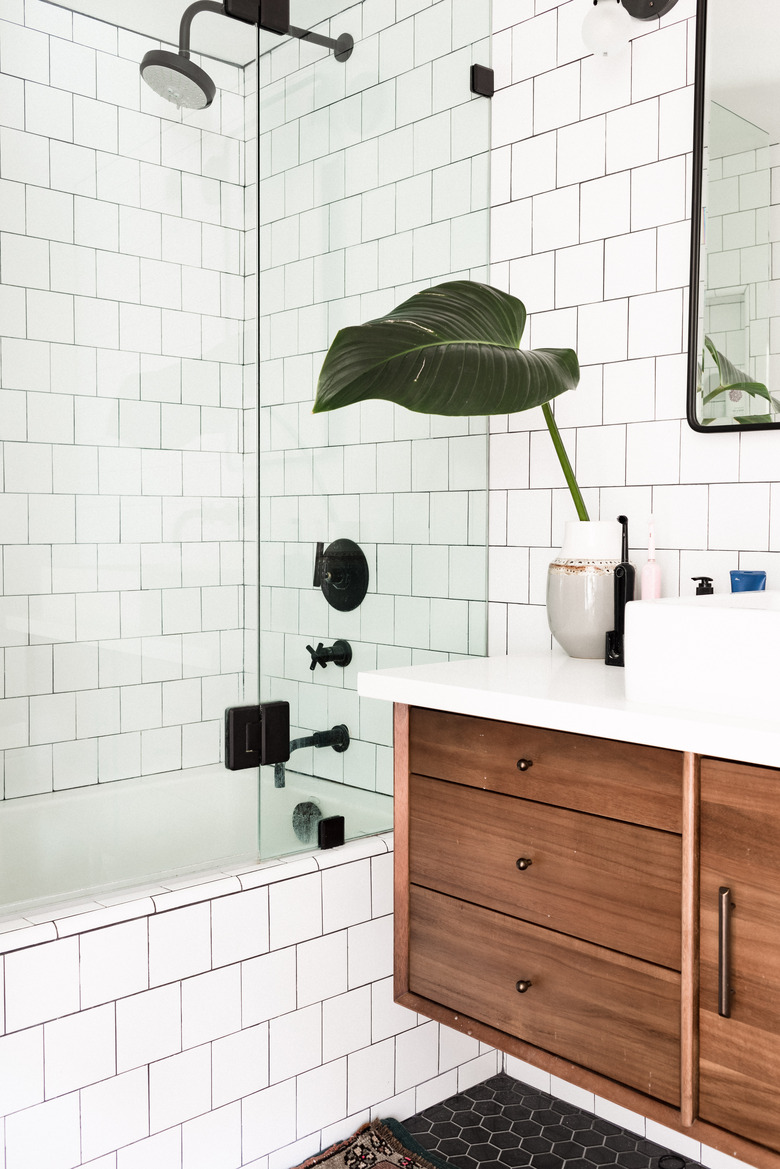Fiberglass Bathtub Hole Repair: A DIY Guide
You may have chosen a fiberglass bathtub because it was lightweight and inexpensive, so it was probably reasonable to assume at the time that you had some fiberglass bathtub repair in your future. To be fair to this all-purpose, fiber-reinforced plastic material, it is fairly durable, and with proper support and care, a fiberglass bathtub can last as long as one made from heavier materials. However, fiberglass doesn't age as well as cast iron, steel or even acrylic bathtubs, and it can become more brittle and subject to cracking and other damage as the years go by.
Deciding Whether Fiberglass Bathtub Repair Is Worth the Effort
Deciding Whether Fiberglass Bathtub Repair Is Worth the Effort
A large crack on the bottom of a fiberglass tub that developed because the tub isn't properly supported will probably continue to spread even after you repair it, but there is a way to provide extra support to forestall this. However, even a hairline crack can allow water to seep, and if this situation persists, a proper repair requires removing the tub and fixing the subfloor. If you purchased or moved into a house with a fiberglass bathtub that has a crack or a hole and you don't have any way of knowing how long the damage has been there, the tub should be replaced.
If a crack or hole develops while you're using a fiberglass bathtub or a fiberglass shower pan, perhaps as a result of flexing or impact from a heavy object you dropped, your chances of a successful repair are better. Just avoid using the fixture until you can get around to doing the repair, which is a fairly easy one, although it may take an entire day. Damage to the rim or sidewall of a fiberglass or acrylic bathtub or to the wall of a shower stall can be repaired at any time provided they pose no threat of leaking.
Supplies You Need for Fiberglass Bathtub Repair
Supplies You Need for Fiberglass Bathtub Repair
The most obvious way to repair a crack or hole in fiberglass is to use a fiberglass bathtub repair kit, which you can find at any home improvement outlet. A typical kit includes two-part epoxy filler in your chosen color, application sticks, cleaning swabs, fine-grit sandpaper and polishing compound. Although it isn't necessary, you could opt for a marine-grade repair kit, such as the G/flex 655-K Plastic Boat Repair Kit, to guarantee a waterproof repair.
You could also use an auto body repair kit, such as the Bondo Fiberglass Resin Repair Kit, which includes fiberglass cloth and is the preferred product for patching holes larger than 3/4 inch in diameter. If you're short on time to go shopping, Remove and Replace suggests a DIY fiberglass filler made with two-part epoxy cement and baby powder to give it a white color. This mixture wouldn't be appropriate for a large hole but can be an easy way to take care of a small one in the side or rim of the tub.
Dealing With a Hairline Crack
Dealing With a Hairline Crack
A bathtub crack can continue to spread even after you patch it, and to prevent this, Badeloft recommends drilling a 1/4-inch hole, called a stop-drill hole, at either end of the crack. If the crack occurred because of a lack of support, you can use these holes to spray high-density foam behind the crack. Once the foam sets, which takes an hour or two, it will provide enough support to prevent the crack from recurring.
Things Needed
-
Alcohol or acetone
-
Painters' tape
-
High-density spray foam
-
Epoxy filler
-
Cardboard
-
Hardener
-
Fiberglass cloth
-
400- and 600-grit wet/dry sandpaper
-
Waterproof spray enamel (if needed)
-
Polishing compound
-
Soft cloth
-
Electric buffer
-
Auto polish
-
Drill
-
1/4-inch wood-boring bit
-
Utility knife
-
Applicator or plastic putty knife
How to Repair a Fiberglass Bathtub Hole
1. Clean the Area to Be Repaired
Wipe down the area around the crack or hole with alcohol or acetone to remove grease, oils and soap residue. If the bathtub repair kit you're using comes with cleaning wipes or pads, you can use these.
2. Apply Painters' Tape
Isolate the area to be repaired by laying a double row of painters' tape around it. Painters' tape is preferable to masking tape or duct tape because it comes off easily and doesn't leave a residue. Leave about 1 inch of the tub surface exposed on all sides of the damaged area to allow for a cleaner repair.
Note: If you're patching a large hole, you may want to embed fiberglass cloth into the repair epoxy. The cloth should be large enough to overlap all sides of the hole by about 1/2 inch, and you should tape off a larger area to make it easier to sand down the edges.
3. Drill Stop-Drill Holes and Reinforce the Fiberglass
If you're doing a crack repair, drill a 1/4-inch hole on either end of the crack with a drill and a wood-boring bit. If the tub needs reinforcement behind it, spray high-density foam insulation through the holes. Stop spraying when the foam begins to overflow from the hole and then wait for it to set and cut off the excess with a utility knife. Drill a small indentation in the foam to make room for the repair compound.
4. Mix Epoxy With Hardener
Read and follow the mixing directions for the epoxy you're using. Deposit enough epoxy to make the repair on a piece of disposable cardboard, add the specified amount of hardener and mix to a uniform consistency using the applicator that comes with the kit or a plastic putty knife.
5. Apply the Filler
Spread the filler evenly inside the taped-off area, making sure it fills the hole and that it overfills the area so you have something to sand down. The patch should rise about 1/16 inch above the surface of the tub. If you're using a fiberglass patch, apply the cloth to the wet epoxy following the manufacturer's directions. As soon as you're done filling and leveling, remove the tape, which will be impossible to do if you let the filler set first. Let the epoxy cure fully as directed.
6. Retape the Area and Start Sanding
Apply a double row of fresh painters' tape to protect the surface of the tub from sanding and then sand the repair as flat as you can using 400-grit wet/dry sandpaper. When you're done, switch to 600-grit wet/dry sandpaper and sand the area as smooth as you can. Finally, remove the tape, wet the 600-grit sandpaper with water and sand the edges of the repair to feather them as seamlessly as possible into the surrounding tub surface.
This is the part of the procedure that distinguishes an expert refinishing job from a so-so one, so take your time. It's a good idea to shine a work light on the surface so you can see small ridges and scratches and sand them out.
7. Apply a Spray Finish (Optional)
If the color of the repair compound is significantly different from that of the tub, you may want to cover the repair with waterproof spray enamel. This won't be much of an improvement, though, unless the enamel is the exact same color as the tub or you spray the entire tub. If you choose the latter approach, be sure to tape off the drain, overflow plate and any other parts of the tub you don't want to paint and don't forget to wipe down the repair with alcohol or acetone before you spray.
8. Apply Polishing Compound
If you don't paint, apply polishing compound to the repair and buff it with a soft cloth until the sheen matches the rest of the tub. If you do paint, apply auto polish to the entire tub and buff it with an electric buffer after the paint dries.


